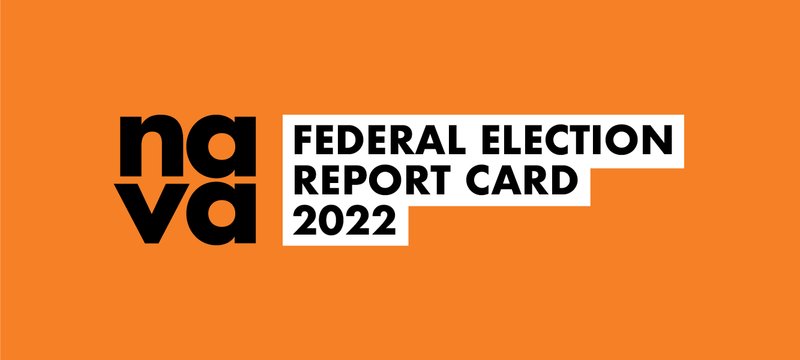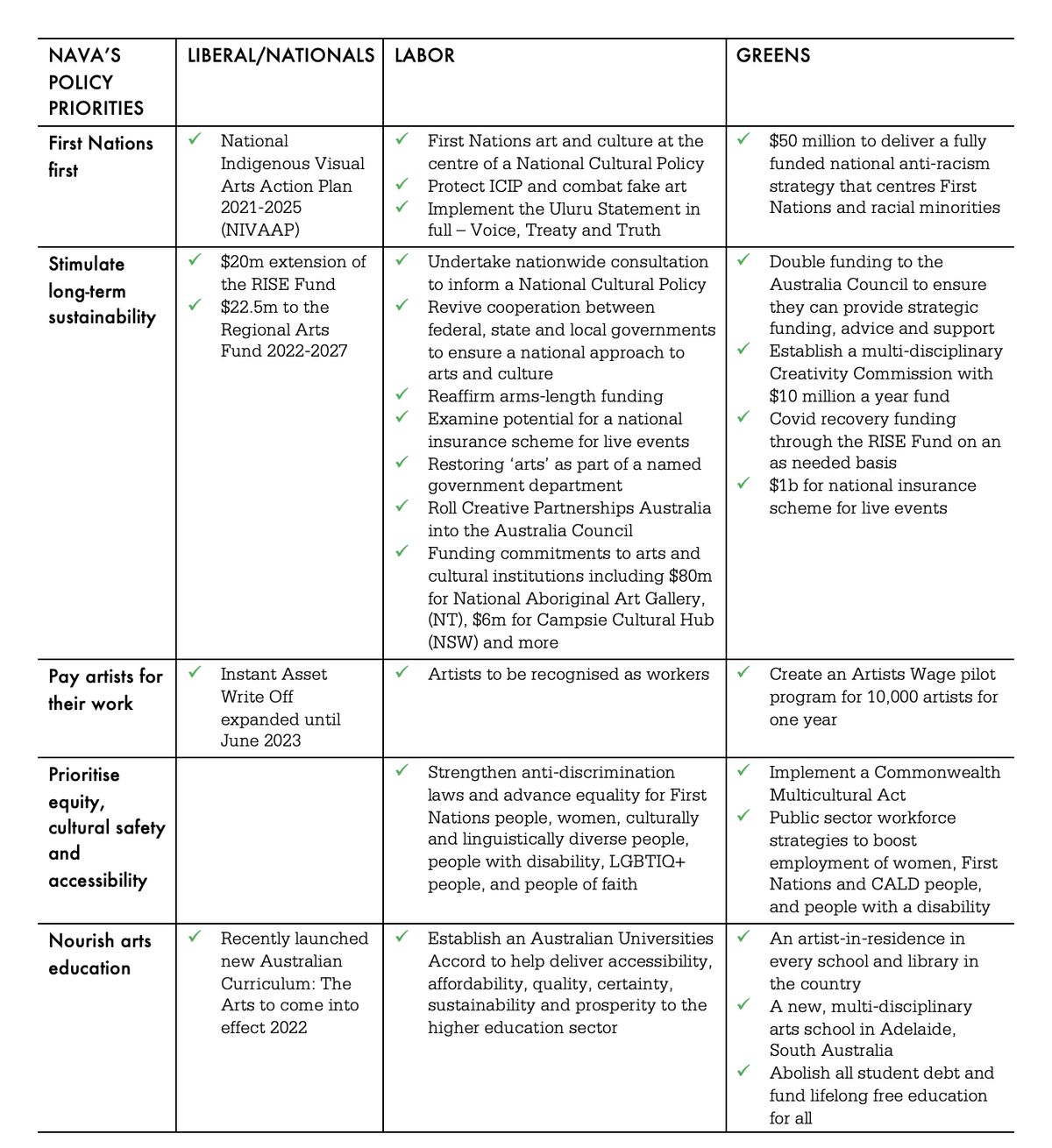Federal Election Report Card 2022
Australia votes on 21 May 2022. What arts and culture vision do the Liberal-National Coalition, Labor and The Greens offer?
Australia votes on 21 May 2022. What arts and culture vision do the Liberal-National Coalition, Labor and The Greens offer?

This report card was compiled from publicly campaign information and election commitments made to date by the Liberal-National Coalition, Labor and The Greens. This summary is not a critique or detailed analysis of policies, but aims to provide information to help voters evaluate each parties’ public positions. NAVA does not endorse any of these parties.
Where the Report Card shows a blank space, we welcome all party representatives to make public commitments or contact NAVA directly.
Updated 17 May 2022. Not reflective of election commitments made in the final campaign days.

Authorised by Penelope Benton for the National Association for the Visual Arts www.nava.net.au. Compiled from publicly available information and campaign materials. Updated on 17.05.2022. Not reflective of election commitments made in the final campaign days.
Visit the AEC webpage to find which federal electorate you live in, then visit the ABC webpage to see a full profile of each electorate and who’s running. Take a look and figure out which candidate you like the most. You can also visit They Vote For You to see how your MPs and Senators voted on your behalf on issues that matter to you.
Anna Freeland reported for ABC News:
Of the 130 independent candidates, there are a handful who have made public commitments to advocating for the arts. They include:
When you get to a polling place, you’ll be handed two pieces of paper. One is green (House of Representatives) and the other is a long white one (Senate).
The green piece of paper is for the House of Representatives. Here you'll be voting on who you want to represent your local area in the Lower House of Parliament. The candidate who wins will be referred to as your local MP or Member of Parliament.
It’s important that you number every single box. If you just write [1] for the person you like, your vote will not count. Number every box from your favourite candidate to your least favourite candidate.
Don’t know any of the names or parties?
Start researching them now! Visit the AEC webpage to find which federal electorate you live in, then visit the ABC webpage to see a full profile of each electorate and who’s running. Figure out which candidate you like the most.
Otherwise, if all you know is that you like one party, you can choose to follow a 'how to vote' pamphlet that a volunteer from your favourite party hands you at the polling place. This is a guide only, you don’t have to follow it. But it may be helpful if you don’t know much about the other candidates.
Don’t know which party you like the most?
Check out NAVA’s Federal Election Report Card to see what arts and cultural commitments the major parties offer. Alternatively, head to Vote Compass on the ABC website to take a short quiz and find out which party you align with most.
The Senate paper is the long white one. Here you’re voting for who you want to represent your state or territory in the Senate also known as the Upper House of Parliament. States get twelve Senators each, while ACT and NT get two each.
You can either vote ABOVE the line, or BELOW the line. You can’t do both so make a choice.
Voting above the line
If you choose to vote above the line it means you’re voting for particular parties or groups but you don’t mind who out of that group is chosen to be a Senator.
All you have to do is number at least six boxes, with [1] being your favourite party or group. If your Senate paper has more than six boxes, you can keep numbering them all but you do not have to.
Because you only have to number six (not necessarily all of the boxes) you don’t have to put your least favourite party as number 6. Just don’t number them at all unless you choose to fill out every box above the line, then you can put them last.
Voting below the line
If you choose to vote below the line, it means you care which Senate candidates get elected. Here you have to fill out at least twelve boxes below the line. You can fill out more than that, or all of them as long as you do 12 at the very least.
If you make a mistake, just ask an official for a new ballot paper!